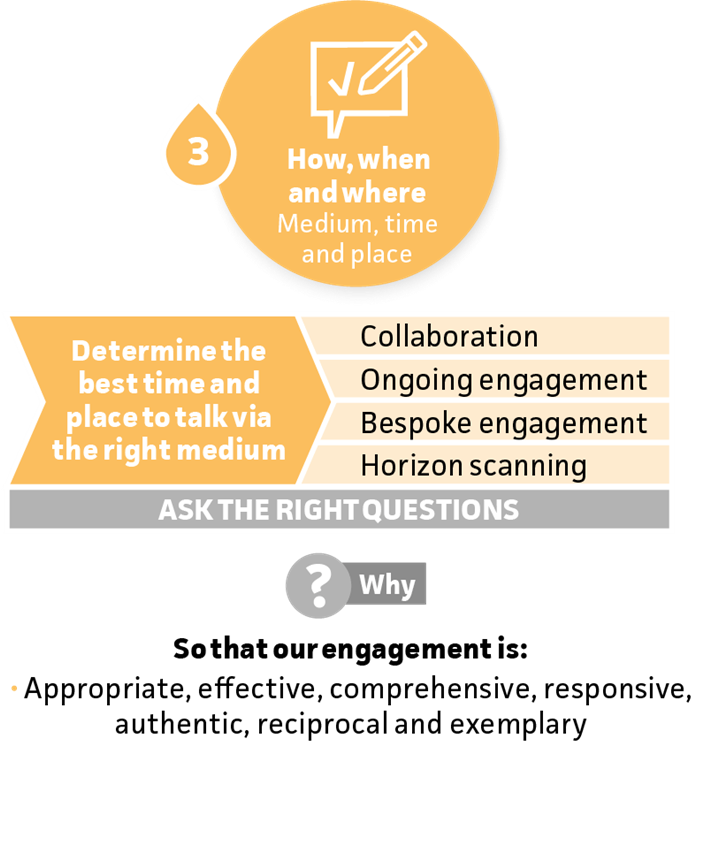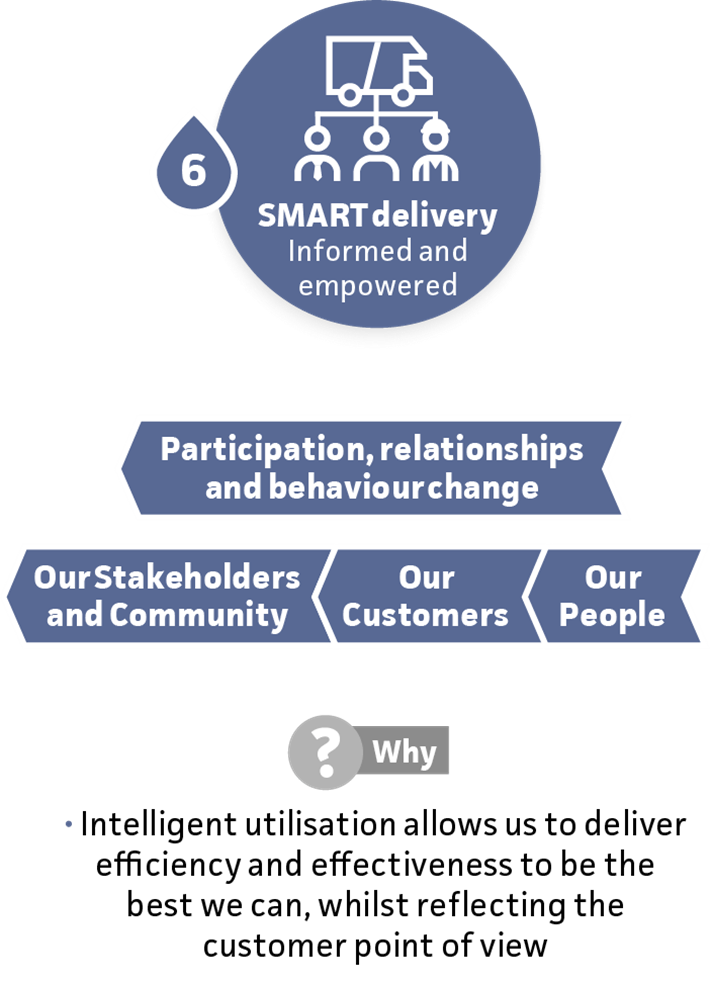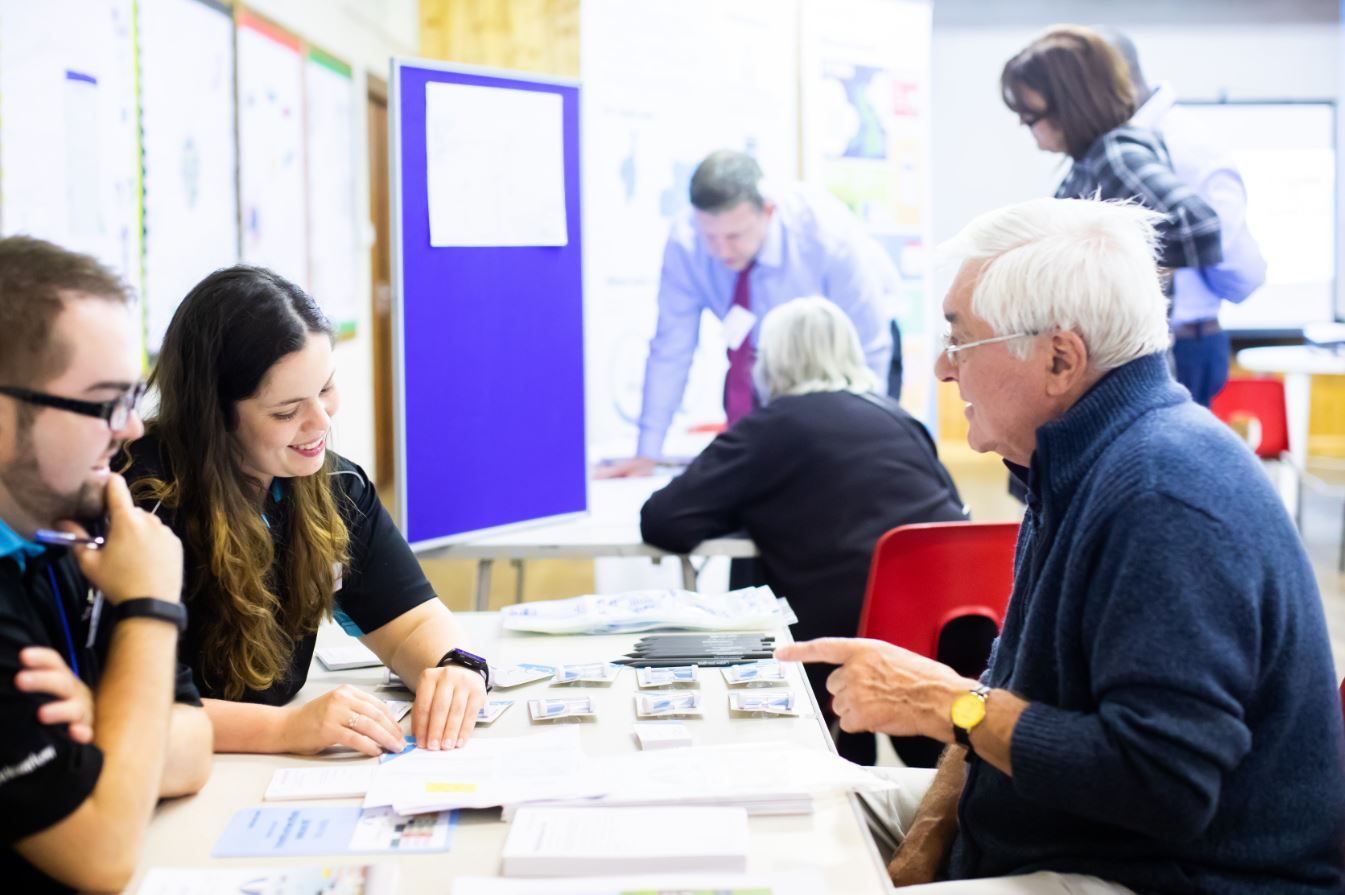Having a deep understanding of our customers’ thoughts and views allows us better opportunity to deliver on the expectations of the service we should provide.

Engagement is about listening to and understanding the communities that we serve, be it via daily interactions, expert research or measuring satisfaction. By listening to the views of customers, and those who represent them, we can improve and develop our service in order to make sure we are doing the right things, for the right purpose and at the right time.
Understanding the motivation and context of the information we gather allows for an effective interpretation of what is being said – this is ‘insight’. The information we gather is collated within our ‘Insight Hub’, which is a database of knowledge that can be viewed collectively to gain a comprehensive, representative and balanced view.
Where our insight comes from
Stage 1 – What people tell us
We have a series of questions that have been identified as providing critical insight to the way we work and the services that we provide. These form the spine of our insight programme and ensure that we can track changes in customer views and thinking. The key questions relate to the following key areas:
- Values and expectations – what do our customers, stakeholders and community value and expect us as a company to be delivering?
- Thinking and response – How is the community and customer view and wants shifting?
- Performance – are we meeting expectations on our delivery?
- Acceptable and affordable – where do our customers want us to invest and how much?
When more specific answers are required then tailored research can be developed to meet the defined objectives, either through the embedded engagement routes or through standalone insight gathering.

Stage 2 – Who we engage with
We have a clear understanding of our customer and stakeholders mapped around key areas of interest and delivery.
Community stakeholder mapping is owned by departments such as Environment Team, Water Resources Team and Vulnerability Strategy Team who are all responsible for the on-going updates via the companies’ Stakeholder Manager, supporting departments and the overarching strategy.

Stage 3 – How we engage
Our methods of engagement are wide and varied, ranging from specific workshops or research activities through to in-depth meetings using inclusive channels.
Our approach to engagement recognises the importance of capturing outcomes and insight from all relevant stakeholders to build up a more robust insight position. Key areas of engagement approaches include:
Collaboration – working with stakeholders and customers in innovative ways to deliver shared goals.
Engagement Ongoing and Bespoke – Appropriate direct research with SEW customers including our day to day interactions.
Horizon Scanning – Utilising external data, insight, case studies and reports to add richness to our own findings

What we do with insight
Stage 4 – The Insight Hub
Our Insight Hub is a key tool for SEW to capture learnings in a way that supports the creation of ‘Actionable Insight’ in order to evolve the company approach.
Outcomes from engagement are fed into the Insight Hub and then weighted using a consistent and defined methodology. This enables insight from different sources to be collated and triangulated against varied data sources.
This actionable insight can then be used to feed decision making.

Stage 5 – How we use the insight
Actionable insight can provide detailed learnings that drive business decisions in the areas of:
- Delivery processes
- Strategy
- Planning
- Company culture
- Investment in infrastructure
- Priorities in activities
This provides the golden thread from ‘you said’ to ‘we did’. We are able to demonstrate how the views of our stakeholders and customers are reflected in what we do and why.

Stage 6 – How we deliver
We can then tailor and bespoke our services to deliver the most efficient and effective customer experience.
By using innovative and efficient methods and utilising expert local service providers, the participation of customers and the community, we can create the best way to deliver regional outcomes.

